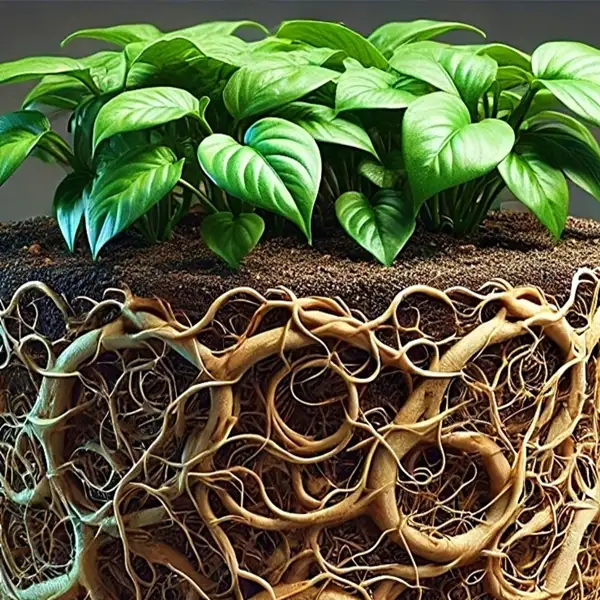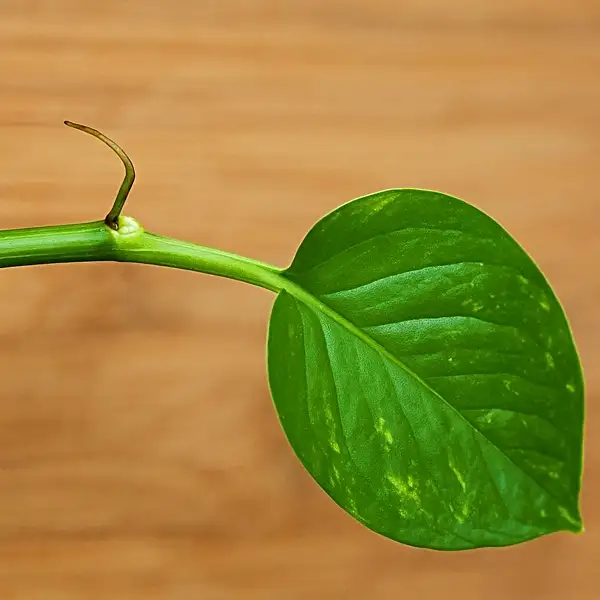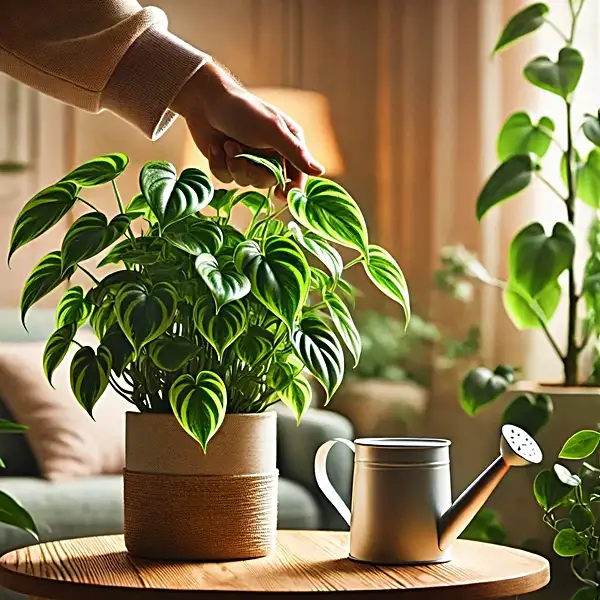Key Takeaways
| Key Takeaway | Why It Matters |
|---|---|
| What happens when pothos become root-bound? | Uncover how their unique adaptation influences growth and survival indoors. |
| Do pothos like to be root bound/prefer tight spaces? | Explore whether they truly thrive when root-bound or if it’s a common misconception. |
| How does pot size affect pothos health? | Learn why choosing the right pot size can make or break your plant’s well-being. |
| What are the signs that a pothos needs repotting? | Recognize early warning signs before your plant suffers from overcrowding stress. |
| How to properly repot a root-bound pothos? | Get expert-backed techniques to transition smoothly and prevent transplant shock. |
Growth Habits of Pothos Plants
Pothos plants/Epipremnum aureum are loved by indoor gardeners for their low-maintenance growth habits. These popular houseplants can thrive even under less-than-perfect conditions – they tolerate weak light and erratically timed watering.
One aspect of pothos plant care that many new owners wonder about is the relationship between root development & pot size in these specific plants.
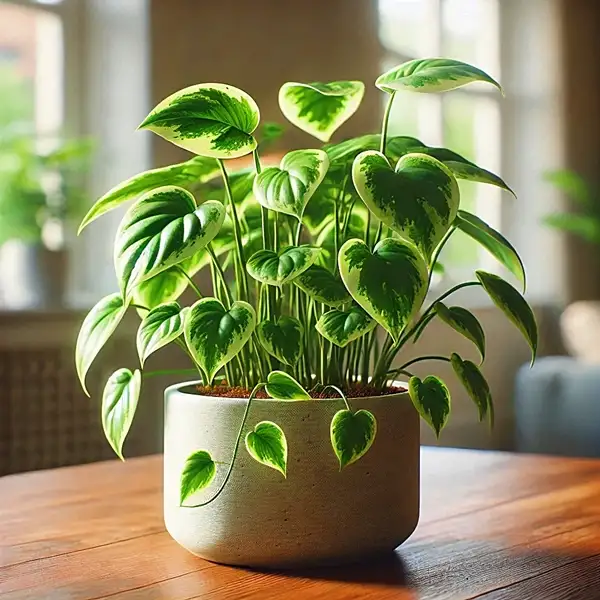
- The growth rate of pothos depends on various conditions – how much light is available, water quality & temperature fluctuations amongst others.
- However, unlike most other plants that require a certain amount of ‘breathing room’ to grow best in terms of soil space, some say that pothos enjoy being a bit tighter in their pots or ‘root bound’. This effectively means their roots occupy much if not all possible space in their designated pot.
- In their natural tropical rainforest habitat, pothos are strong climbers. Instead of spreading on the forest floor, they wrap around tree bark & grow upwards. Some experts think this is why pothos don’t mind tight spaces.
- Their aerial roots help them climb & reach sunlight without needing much soil. This raises an interesting question: does their natural growth pattern make them prefer smaller pots?
This background information highlights an integral aspect of every indoor gardener’s experience in owning such a plant: understanding what being root-bound actually entails.
Concept of Being ‘Root Bound’: What Does it Mean?
The distinction between “root-bound” and “pot-bound” is worth noting. While both refer to container confinement, let’s differentiate them.
Comparing ‘Root-Bound’ and ‘Pot-Bound’
| Aspect | Root-Bound | Pot-Bound |
|---|---|---|
| Definition |
|
|
| Root Behavior |
|
|
| Plant Health Impact |
|
|
| Solution |
|
|
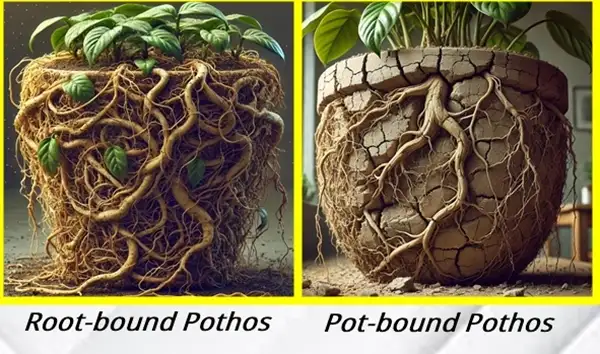
6 Signs Indicating a Root-Bound Pothos
| Sign | Description |
|---|---|
| Slow Growth |
|
| Root Visibility |
|
| Leaf Discoloration |
|
| Wilting Foliage |
|
| Soil Compaction |
|
| Pot Damage |
|
Gardeners Debate: Do Pothos Plants Love to Be Root Bound?
Differentiating pothos’ affinity for being root-bound requires a deeper understanding of its specific growth behavior.
- Some indoor gardening enthusiasts suggest that pothos may actually prefer such conditions.
- A tighter pot is believed to provide a sense of security, replicating optimal growing conditions similar to its natural habitat, where vines grow densely in jungle environments.
- This idea is further supported by numerous firsthand reports indicating that pothos plants often grow more vigorously and produce lush foliage when slightly confined.
- Many plant owners have observed healthier growth when their pothos experience spatial limitations, leading some to believe this condition benefits the plant.
However, there is no universal consensus on this matter, as scientific research remains limited. Most claims about pothos’ preference for being root-bound are based on anecdotal evidence rather than formal studies.
Pros & Cons of Being Root-Bound for Pothos
Being tightly potted brings noticeable changes to your pothos plant’s overall health, with both positive & negative effects that should be considered for a balanced understanding.
| Observed Effects of Being Root-Bound | Description |
|---|---|
| Positive Effects |
|
| Negative Effects |
|
6 Expert-Backed Insights: Caring for Root-Bound Pothos
Plant lovers continuously seek valuable wisdom from experienced gardeners to optimize growth of their beloved plants:
| Recommendation | Details |
|---|---|
| Yearly/Annual Monitoring |
|
| Gradual Pot Size Increase |
|
| Soil Refreshment |
|
| Proper Watering Practices |
|
| Adequate Drainage |
|
| Humidity Maintenance |
|
My Recommendation
Before planning, long-term effects must also be considered.
7 Practical Steps to Repot & Care for Your Root-Bound Pothos
Accepting the reality of inevitable root-bound conditions is essential. Overcoming them productively often requires repotting, which is the most universally recommended solution.
| Step | Action |
|---|---|
| Choose the Right Time |
|
| Select a New Pot |
|
| Prepare Fresh Soil |
|
| Remove Plant Gently |
|
| Inspect and Prune Roots |
|
| Repot Plant |
|
| Post-Repotting Care |
|
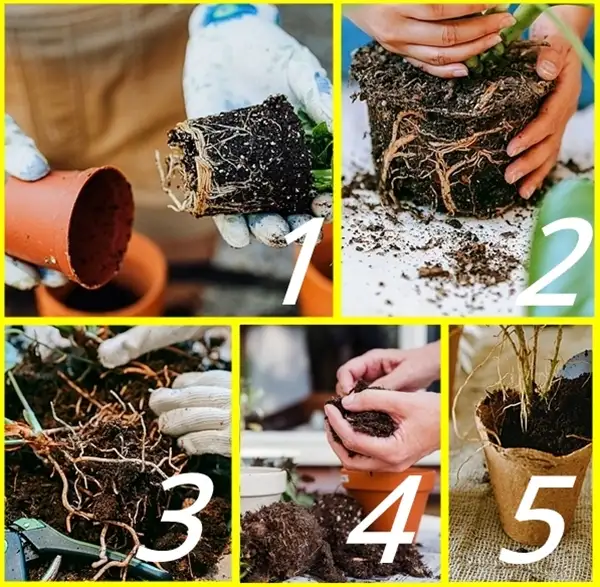
Final Thoughts
While some gardeners believe pothos thrive when root-bound, there is no universal answer. Being root-bound can trigger survival-driven growth but long-term effects like restricted nutrients & stress can harm plant.
Understanding signs & taking timely action—whether maintaining or repotting—ensures your pothos stays healthy & vibrant. With proper care, you can strike right balance & help your plant flourish in any setting.
Frequently Asked Questions
How do you know when to repot pothos?
When growth slows, leaves yellow or roots emerge from drainage holes, it is time to repot. Water pooling on the soil surface or persistent wilting also signal root-bound stress. Move to a pot 1 to 2 inches larger to maintain healthy growth without overwhelming plant.
Do pothos like big or small pots?
Pothos prefer snug pots that mimic their natural climbing environment. A pot too large retains excess moisture, risking root rot. Choose a slightly larger pot when repotting to balance root space & soil drainage.


